A Once-in-a-Lifetime Double Brood of Cicadas Is Emerging This Spring
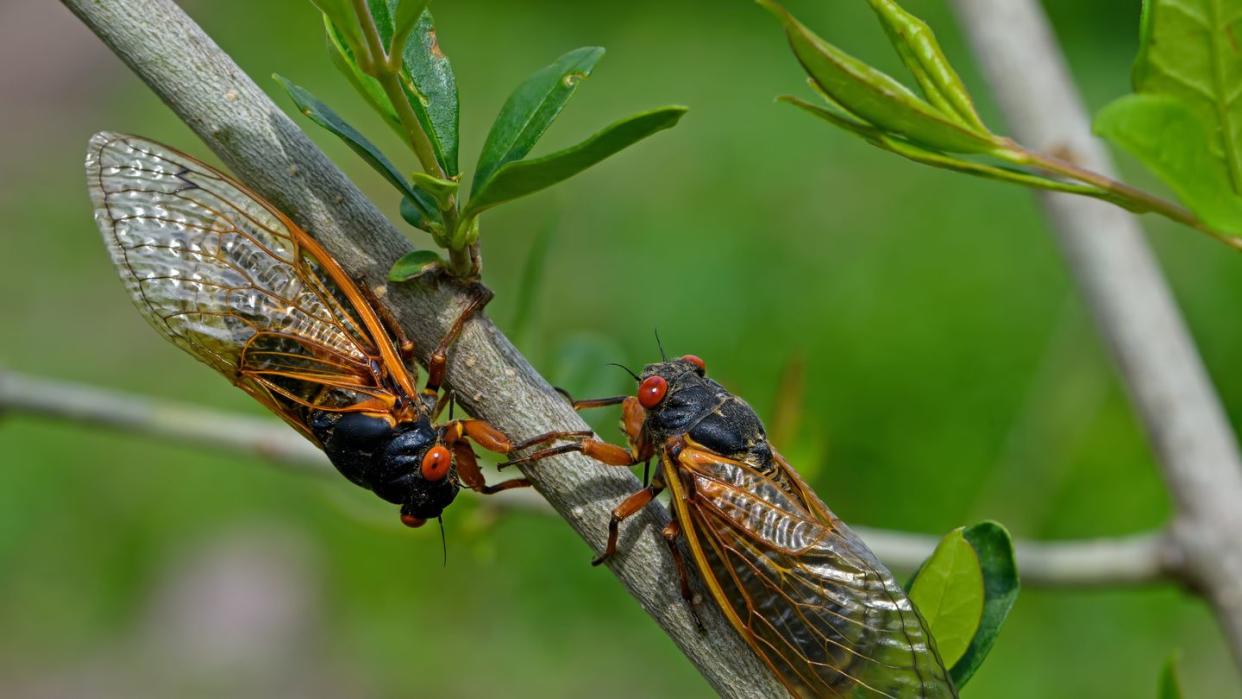
"Hearst Magazines and Yahoo may earn commission or revenue on some items through these links."
[table-of-contents] stripped
This spring, it’s about to get noisy!
Trillions of periodical cicadas will emerge from underground, shed their skins, and head for the trees, looking for love. The males will perform complex calling songs to attract the females. You'll hear quite a din once they get going. By some estimates, there may be more than a million per acre!
This year’s emergence is unique because two different broods will appear simultaneously.
“A brood is a population that comes out at the same time in the same general area,” says Eric Benson, PhD, Professor Emeritus and Extension Entomologist at Clemson University. “This spring, we have emergences of the largest of all broods, the 13-year Brood XIX cicadas, in the Southeast and the 17-year Brood XIII in the Midwest.”
This is the first time since 1803 that these specific broods have emerged in the same year!
The event is even more special because it’s so widespread. “It covers much of the eastern U.S., including parts of 17 states,” says Chris Simon, PhD, senior research scientist at the University of Connecticut, which maintains a site dedicated to periodical cicadas. “There are many years one of the 13-year broods come out in the same year as one of the 17-year broods, but most of these co-emergences are not adjacent.”
For the most part, the broods will not overlap, although they may occur together in small patches of woods in northern Illinois.
Here’s everything else you need to know about this astounding natural event:
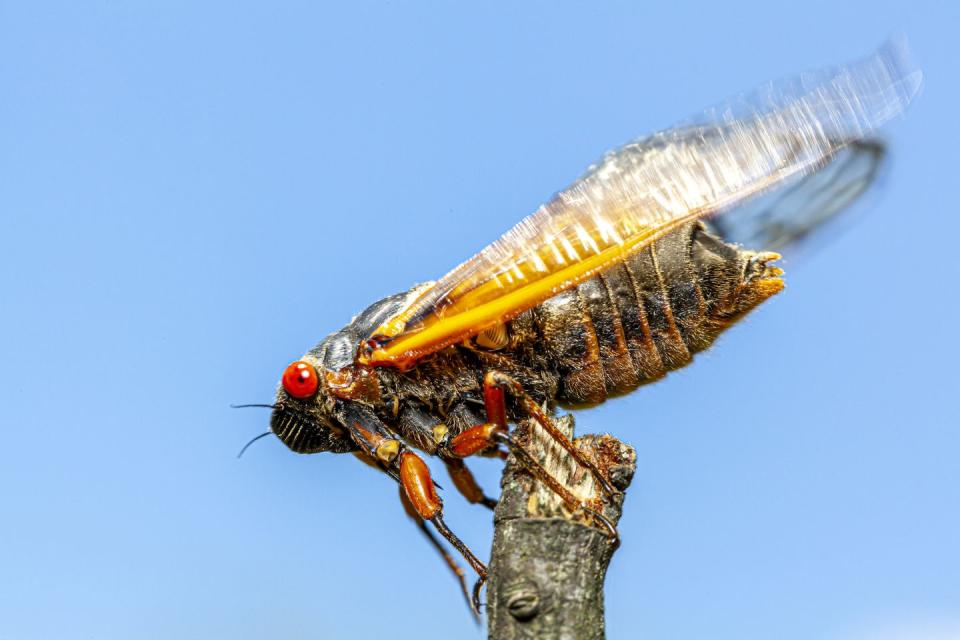
What Are Periodical Cicadas?
Periodical cicadas (Magicicada species) are unusual insects, found only in eastern North America. While there are about 150 species of cicadas in the U.S., only seven Magicicada species have synchronized their development to create periodical emergences. The rest are annual cicadas that appear every year in summer.
The broods, also called year-classes, are designated by Roman numerals, with 12 broods of the 17-year cicadas and three broods of 13-year cicadas. Some broods don’t exist because they never formed or became extinct.
The numbering system was devised in 1902 by USDA entomologist Charles Marlatt, who arbitrarily designated all cicadas that emerged in 1893 and at 17-year intervals after that as Brood I, says Simon. The cicadas that emerged in 1894 were Brood II, and so on. The 17-year cicadas are Roman numerals I to XVII and the 13-year cicadas are XVIII to XXX.
Interestingly, sometimes periodical cicadas get off-schedule by emerging a year or more earlier or later than expected, says Benson. Appropriately known as “stragglers,” there may be only a few cicadas or thousands of cicadas. In fact, off-cycle stragglers from Brood XIV and Brood XXIII will likely emerge this year.
How Long Have Cicadas Been Around?
These amazing insects have been doing their thing since before recorded history, says Benson.
Cicadas were known to the Indigenous Peoples long before European contact, though the Pilgrims at Plymouth Colony first noted their presence in 1634. Thomas Jefferson commented on them in his 1775 Memorandum Book:
“Dr. Walker says he remembers that the years 1724 and 1741 were great locust years. We all remember that 1758 was and now they are come again this year 1775. It appears once every 17 years. They come out of the ground from a prodigious depth.”
Cicadas vs Locusts
Though there is some confusion between the two, cicadas are not locusts.
Locusts are a type of grasshopper and they can be a serious agricultural pest. Cicadas, which feed on liquid and cannot chew, do not damage crops.
The inaccurate term “locust” started being used in the English colonies in 1715 when people compared the cicada emergences with Biblical plagues.
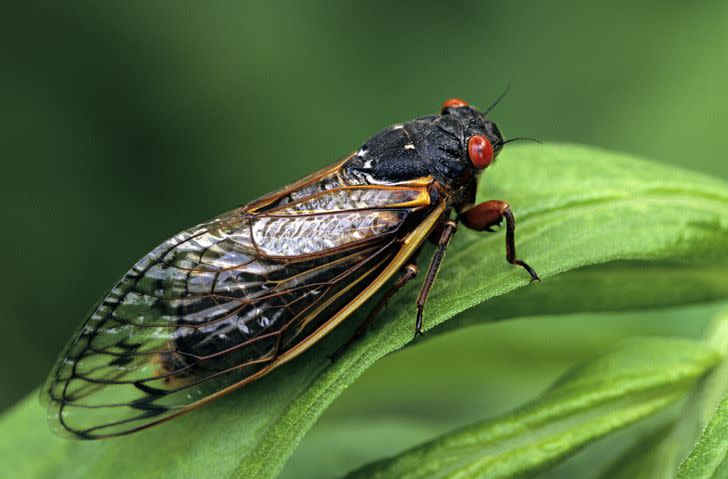
Where Will the Cicadas Emerge?
Despite the large number of cicadas that will emerge across the country this spring, not everyone will have the opportunity to see these striking bugs with their 1.5-inch-long black bodies, shimmery orange-veined wings and bright red-orange eyes.
Depending on where you live, you may have a lot of cicadas, or none at all. And even within neighborhoods, there may be spotty emergences in some places…or none at all, says Benson. Here's a map of where they are expected to appear, courtesy of the USDA:
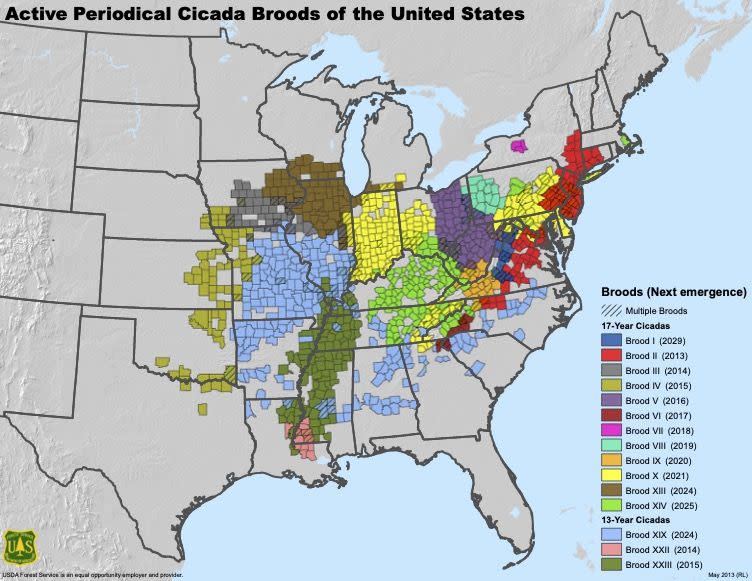
If you do spot cicadas where you live, you can help scientists log their appearance by downloading the free mapping app, Cicada Safari.
When Will the Periodical Cicadas Emerge?
They’ll appear sometime in the spring, typically in early to mid-April or May in the south and in May or June in the colder parts of the country, says Simon.
Their appearance is related to soil temperatures, with emergences occurring when the ground temperature at 7 to 8 inches deep is about 64°F (about 18°C), says Benson.
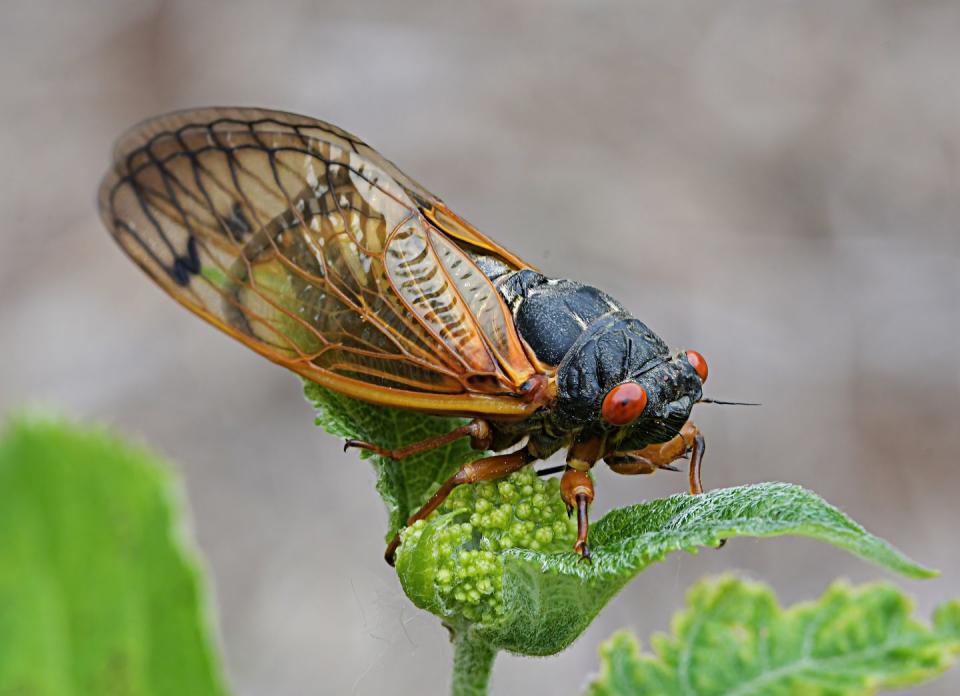
What Happens After the Cicadas Emerge?
Basically, it’s one big party! After spending five juvenile stages underground, the baby cicadas, or nymphs, tunnel up to the surface. The nymphs hang out on nearby plants and wait for their final molt, leaving their shed skin sticking to the plant or tree, says Benson.
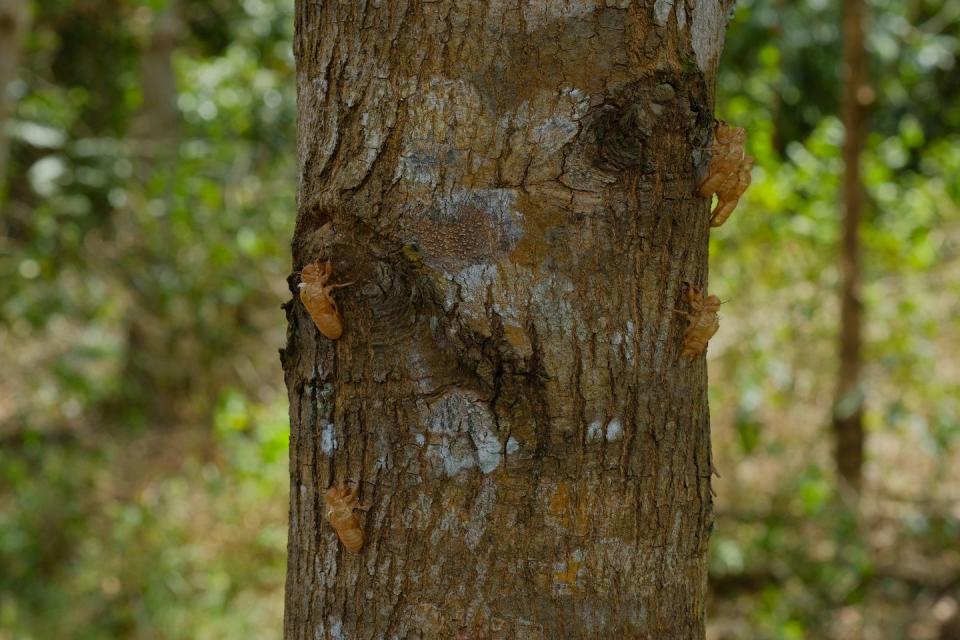
The new adults are white, becoming darker as their exoskeletons harden. After a few days, they fly up to the trees, and the males begin their calling songs by vibrating a membrane on their bodies, says Benson. In the meantime, birds, lizards, and mammals that are insectivores are able to feast to their heart’s content on cicadas.
Once mated, the females lay their eggs in twigs and branches. The eggs hatch in six to ten weeks, the new nymphs fall to the ground, burrow underground, feed off xylem (the water-transporting tissue of trees), and begin their wait to emerge in 13 or 17 years, says Benson.
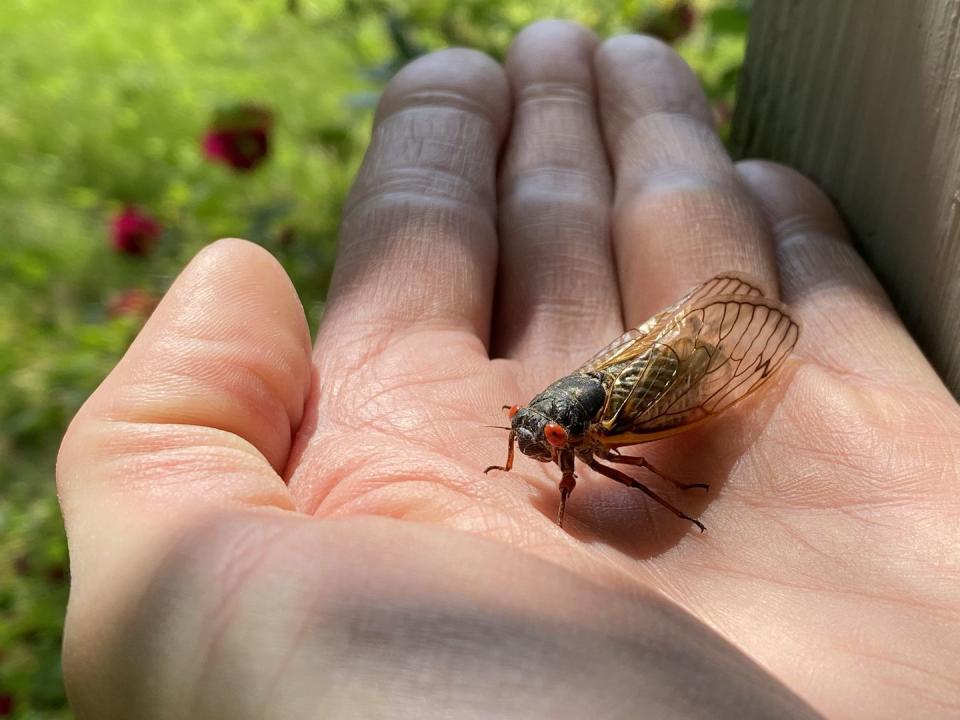
Do Cicadas Bite?
Nope! They don’t bite or sting and are not toxic to people or pets, says Benson. They will emit a loud buzzing if handled, and they may occasionally land on you or a pet by accident. But they’re simply looking for a tree, so just brush them off.
Will Cicadas Eat My Garden Plants?
This is unlikely! The adults and nymphs feed on tree xylem. You may see them sitting on annuals and perennials in your garden, but they’re waiting for their exoskeletons to harden and will soon fly up into the trees.
The only risk may be to young or newly-planted trees. “Female periodical cicadas like to lay eggs in small trees, especially in sunny areas,” says Simon. If enough eggs are laid in these trees, there can be damage, or flagging, where branches die.
If you’ve recently planted new trees and are expecting an emergence, it’s smart to cover them with cicada netting with ¼-inch or smaller holes. But cicadas won’t harm larger, established trees.

Is It Okay If My Dog Eats Cicadas?
Not really. Even if a curious dog (or cat) only ingests a few, there’s a risk of choking on the crunchy exoskeletons. And pets that overdo it may experience GI upset and vomiting. Call your vet if you’ve caught your pet in the act and have concerns.
On the other hand, young periodical cicadas (eaten when they’re still white) are edible and are said to taste like cold canned asparagus, according to entomologist Gene Kritsky, PhD, cicada researcher and author of A Tale of Two Broods: The 2024 Emergence of Periodical Cicada Broods XIII and XIX. .
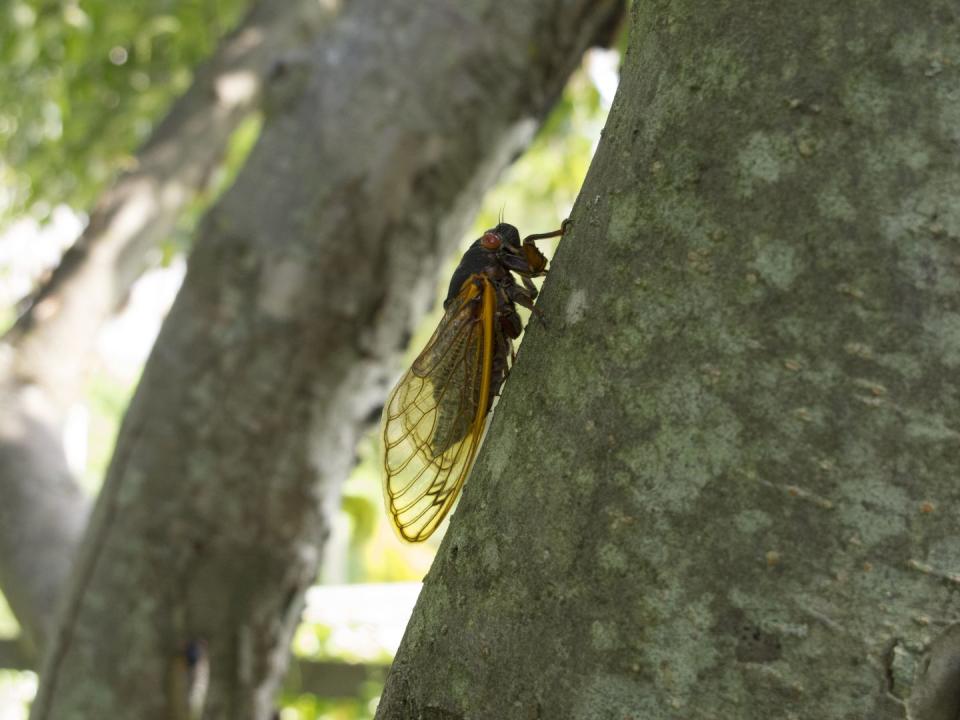
What Should I Do with the Cicadas?
Basically, just enjoy the show! You don’t need to do a thing but marvel at the incredible way nature works. “Cicadas don’t carry disease or damage your home,” says Benson. “These emergences are cool examples of healthy environments. This is a special event in nature that you may never get to see again.”
As for the shed skins, sweep them away, compost them, or leave them be to let nature handle the outcome. They’ll eventually decompose and add nutrients back to the soil, completing the entire environmental cycle.
You Might Also Like

